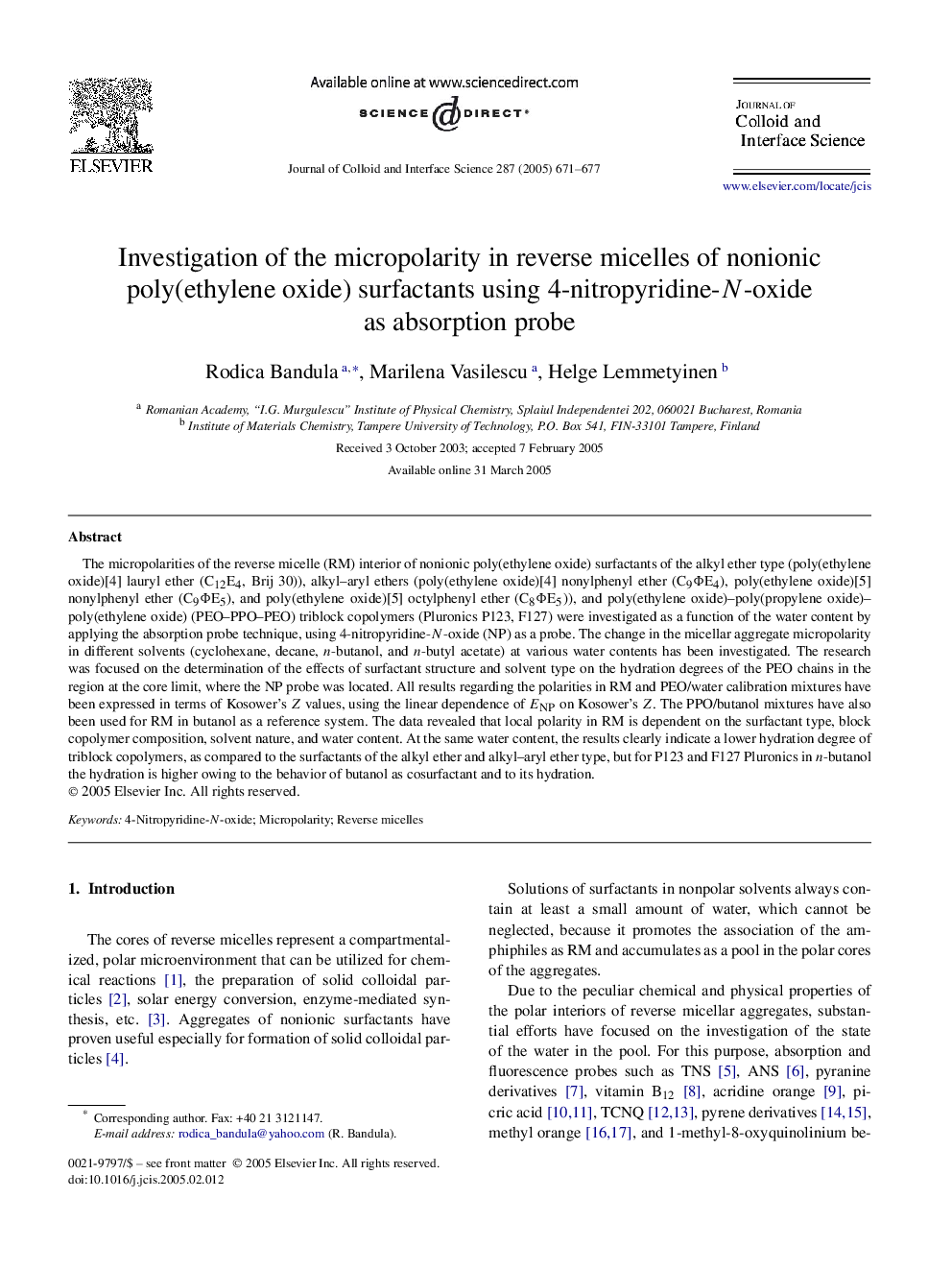| Article ID | Journal | Published Year | Pages | File Type |
|---|---|---|---|---|
| 10377795 | Journal of Colloid and Interface Science | 2005 | 7 Pages |
Abstract
The micropolarities of the reverse micelle (RM) interior of nonionic poly(ethylene oxide) surfactants of the alkyl ether type (poly(ethylene oxide)[4] lauryl ether (C12E4, Brij 30)), alkyl-aryl ethers (poly(ethylene oxide)[4] nonylphenyl ether (C9ΦE4), poly(ethylene oxide)[5] nonylphenyl ether (C9ΦE5), and poly(ethylene oxide)[5] octylphenyl ether (C8ΦE5)), and poly(ethylene oxide)-poly(propylene oxide)-poly(ethylene oxide) (PEO-PPO-PEO) triblock copolymers (Pluronics P123, F127) were investigated as a function of the water content by applying the absorption probe technique, using 4-nitropyridine-N-oxide (NP) as a probe. The change in the micellar aggregate micropolarity in different solvents (cyclohexane, decane, n-butanol, and n-butyl acetate) at various water contents has been investigated. The research was focused on the determination of the effects of surfactant structure and solvent type on the hydration degrees of the PEO chains in the region at the core limit, where the NP probe was located. All results regarding the polarities in RM and PEO/water calibration mixtures have been expressed in terms of Kosower's Z values, using the linear dependence of ENP on Kosower's Z. The PPO/butanol mixtures have also been used for RM in butanol as a reference system. The data revealed that local polarity in RM is dependent on the surfactant type, block copolymer composition, solvent nature, and water content. At the same water content, the results clearly indicate a lower hydration degree of triblock copolymers, as compared to the surfactants of the alkyl ether and alkyl-aryl ether type, but for P123 and F127 Pluronics in n-butanol the hydration is higher owing to the behavior of butanol as cosurfactant and to its hydration.
Keywords
Related Topics
Physical Sciences and Engineering
Chemical Engineering
Colloid and Surface Chemistry
Authors
Rodica Bandula, Marilena Vasilescu, Helge Lemmetyinen,
